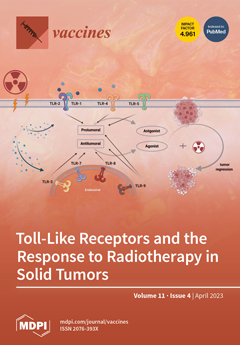Introduction: COVID-19 in Brazil has already caused, and it still causes, several impacts on health, economy, and education. The risk factors for death involved those with cardiovascular diseases (CVD), which were prioritized for the vaccination of COVID-19. Objective: To investigate the clinical characteristics and outcomes between vaccinated and unvaccinated patients with cardiovascular diseases hospitalized for COVID-19 in Brazil in the year 2022. Methods: A retrospective cohort was analyzed from the year 2022, with cases being hospitalized by COVID-19 being drawn from SIVEP-GRIPE surveillance. We compared clinical characteristics, comorbidities, and outcomes between CVD carriers and non-carriers, and we also compared vaccinated with two doses vs. those that are unvaccinated in CVD carriers. We performed chi-square, odds ratio, logistic regression, and survival analysis. Results: We included, in the cohort, 112,459 hospital inpatients. An amount of 71,661 (63.72%) of the hospitalized patients had CVD. Regarding deaths, 37,888 (33.69%) died. Regarding vaccination against COVID-19, 20,855 (18.54%) people were not vaccinated with any dose among those with CVD. Death
p- < 0.001 (OR 1.307-CI 1.235–1.383) and fever
p- < 0.001 (OR 1.156-CI 1.098–1.218) were associated with the unvaccinated CVD carriers, and diarrhea
p-0.015 (OR 1.116-CI 1.022–1.218), dyspnea
p-0.022 (OR 1.074-CI 1.011–1.142), and respiratory distress
p-0.021 (OR 1.070-CI 1.011–1.134) were also recorded. Those patients who possessed predictors of death, including invasive ventilation (
p- < 0.001 (OR 8.816-CI 8.313–9.350)), were admitted to the ICU
p- < 0.001 (OR 1.754-CI 1.684–1.827), and some had respiratory distress
p- < 0.001 (OR 1.367-CI 1.312–1.423), dyspnea
p < 0.001 (OR 1.341-CI 1.284–1.400), O
2 saturation < 95%
p- < 0. 001 (OR 1.307-CI 1.254–1.363), they were unvaccinated against COVID-19
p- < 0.001 (OR 1.258-CI 1.200–1.319), they were of male sex
p- < 0.001 (OR 1.179-CI 1.138–1.221), they had diarrhea
p-0.018 (OR 1.081-CI 1.013–1.154), and they may have been old
p < 0.001 (OR 1.034-CI 1.033–1.035). Survival was shorter for the unvaccinated
p-0.003, and
p- <0.001. Conclusions: We highlight the predictors of death for those unvaccinated against COVID-19 in this research, and we evidenced the benefits of the COVID-19 vaccine in reducing deaths in hospitalized CVD patients.
Full article






